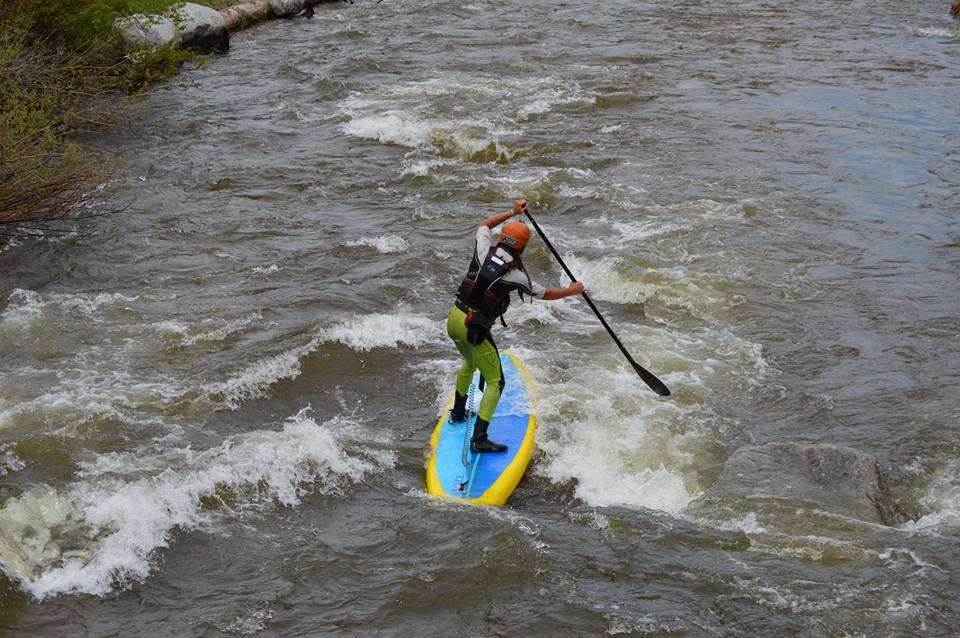
Underneath the Surface: A Deep Dive into Paddleboard Construction Techniques
Paddleboarding's journey from a leisurely pastime to a global sporting phenomenon is as fascinating as it is diverse. With roots stretching back to the traditional wooden boards of yore, today's paddleboards—be they solid or inflatable—embody a blend of innovation, design, and a deep understanding of paddler needs. Let's embark on a journey beneath the surface of stand-up paddleboards (SUPs), exploring the craftsmanship that powers your paddleboarding adventures.
Key Highlights
- Evolution of Paddleboard Materials: From traditional wooden designs to advanced composites, see how materials have revolutionized board performance and durability.
- Construction Techniques Unveiled: Dive into the meticulous processes behind solid and inflatable SUPs, including the latest in drop-stitch technology.
- Balancing Performance with Sustainability: Learn how manufacturers are adopting eco-friendly practices without compromising on board quality.
- Safety and Durability Standards: Understand the rigorous testing SUPs undergo to ensure they meet the highest safety and durability standards.
- Innovations on the Horizon: Peek into future trends in paddleboard construction, from ultra-lightweight materials to smart SUPs.
Spicier Titles
Paddle boarding, as a sport and leisure activity, has experienced a significant evolution over the years. From the traditional wooden paddle boards of old to today's advanced models, the technological progression is intriguing. Every board—whether solid or inflatable—has a story to tell. This story is intricately interwoven with design innovations, material advancements, and the needs of diverse paddle boarding enthusiasts. This article delves into these compelling narratives, offering insights into the multifaceted construction techniques of paddleboards. For a comprehensive overview of paddle board construction, you might want to browse through Glide SUP's dedicated blog section.
Tracing the Path of Paddle Board Construction

Paddle board construction techniques have not emerged in a vacuum—they are the result of years of refinement, experimentation, and learning from the ground up. It's an ongoing process that constantly seeks to improve functionality, stability, and aesthetics while ensuring optimal durability and performance.
Solid Paddle Boards: From Traditional Woods to Modern Materials
In the beginning, paddle boards were simply large blocks of wood carefully shaped by skilled craftsmen. Today's solid paddle boards, however, have undergone a remarkable transformation. Modern solid paddle boards primarily consist of an expanded polystyrene (EPS) foam core. This core is typically encased in multiple layers of fiberglass and epoxy resin, lending the board an impressive strength-to-weight ratio. For more information on solid paddle board construction, have a look at this enlightening Glide SUP blog.
In the realm of high-performance paddle boards, carbon fiber is a sought-after material due to its exceptional strength and lightness. These advanced boards are meticulously engineered, harnessing carbon fiber's properties to offer optimal performance while reducing weight—an important factor in competitive paddle boarding.
Inflatable Paddle Boards: A Leap Towards Portability and Convenience
Inflatable paddle boards, often referred to as iSUPs, have brought a sea change in paddleboarding, offering unparalleled portability and storage convenience. These boards can be deflated, rolled up, and easily stowed away in a backpack—attributes that have expanded the sport's reach to many who don't have the space for solid boards. These inflatable wonders have significantly revolutionized the SUP industry.
Innovations and Breakthroughs in Paddle Board Design and Construction

The world of paddle boarding is not static—it continuously evolves to better meet the needs of paddlers.
Striking the Balance Between Durability and Performance
Striking the right balance between durability and performance has always been a critical aspect of paddleboard construction. Many inflatable SUPs, for example, are crafted using a durable PVC outer shell with innovative drop-stitch technology. This technology involves thousands of tiny threads connecting the board's top and bottom layers, enabling it to retain a rigid, stable shape when inflated to high pressures. For more information on how inflatable paddleboards are made, check out this comprehensive article.
Tailoring Boards to User Needs: The Rise of Versatility and User-Friendliness
Over time, paddle board designs have increasingly focused on user-friendliness and versatility. Today, paddle boards are available with a host of additional features intended to enhance the paddling experience and cater to diverse user needs. Some boards come with bungee cords for gear storage, specialized fins for improved maneuverability, and even mounted fishing rod holders for the angling enthusiasts. The introduction of these user-oriented features is reflective of how paddleboard construction techniques have evolved to cater to the specific interests and preferences of users.
The Role of Safety and Sustainability in Paddleboard Construction
Innovation in paddle board construction is not solely performance-oriented; it also addresses critical aspects of safety and environmental responsibility.
Safety: Not a Matter of Compromise
Ensuring rider safety is paramount in paddleboard construction. Many paddle boards come with non-slip deck pads to provide better grip and stability—crucial when dealing with wet conditions. For novice paddlers and kids, manufacturers design boards with greater width and thickness for improved stability and balance. For more insights into the factors influencing paddle board safety, explore the Glide SUP blog.
Sustainability: A Commitment to Protecting Our Waters
In the age of environmental consciousness, many paddle board manufacturers are making a dedicated effort to reduce their environmental footprint. They are integrating eco-friendly practices into their manufacturing processes and utilizing sustainable materials wherever possible. It's a concerted move towards safeguarding our water bodies—the very essence of paddle boarding.
The Future of Paddle Board Construction

As paddle boarding continues to grow in popularity, so too does the innovation and diversity of its construction techniques. The future promises exciting developments—lighter yet stronger materials, more efficient manufacturing processes, and advanced features tailored to a broader range of paddle boarding activities.
In essence, the progression of paddle board construction techniques is a testament to human ingenuity and the quest for enhanced recreational experiences. From the rudimentary wooden boards of the past to today's sophisticated models, paddle board construction has indeed come a long way. Whether you're a seasoned paddler seeking to push your limits or a beginner just starting your journey, understanding how your board is made can enhance your appreciation for this captivating sport.
For anyone interested in the technical aspects of paddle board construction, the innovations in design and materials, or the latest trends in the industry, Glide SUP provides a wealth of knowledge and information, with in-depth articles and expert advice on everything paddle boarding.


